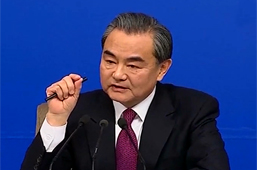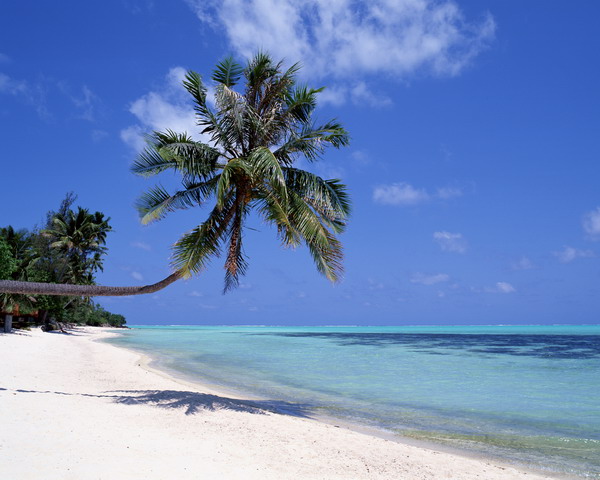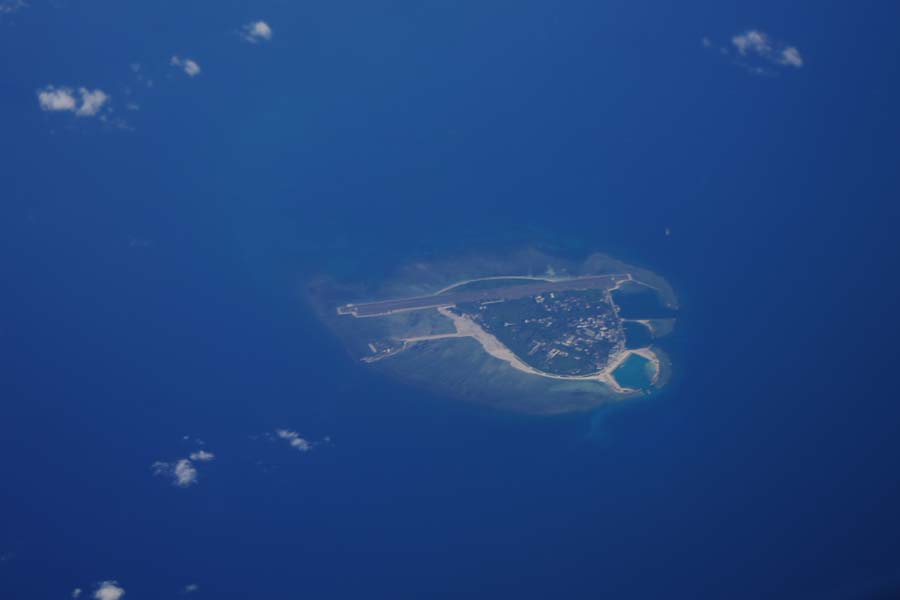2. Developmental and Constructional Activities
In order to develop Nanhai Zhudao and improve the navigation conditions in the South China Sea, the Chinese Government approved the developmental activities of the Xisha Qundao and Nansha Qundao by commercial organizations and governmental agencies on a number of occasions, and formulated corresponding regulations for their management. In addition, it implemented construction of various facilities, including lighthouses, radio stations, and observatories and so on.
1) Traffic and Meteorological Facilities
On March 19, 1926, the observatory for Dongsha Qundao was completed, including one observatory station, one radio station and one lighthouse.
On April 27, 1930, the Far East Meteorological Conference was held in Hong Kong. "The Manila Observatory proposed that this Conference recognize the Dongshao Observatory established by the Chinese government for being a most important meteorological institution for the Chinese seas, and for benefiting vessels sailing across the Chinese seas. It also hoped that observatories should be erected in Paracel (Xisha Qundao) and Macclesfield Bank (now Zhongsha Qundao) with a view to enhancing navigational safety. At the meeting, a resolution was adopted for the director of Dongsha Qundao Observatory to request the Chinese Government to build observation facilities on the above two Islands. Accordingly, the Executive Yuan ordered the Navy Department to build the Observatory of Xisha Qundao.
In July 1933, the French occupied several Chinese reefs in Nansha Qundao and attempted to seize Xisha Qundao under the pretext of heavy typhoon losses sustained by Annam because no meteorological station had been constructed on Xisha Qundao. Fully aware of the fact that a meteorological Station in Xisha Qundao was a matter of territorial sovereignty, the Chinese Government decided to implement the project as soon as possible. After several rounds of coordination, a meteorological station, a radio station and lighthouses were finally built in Xisha Qundao in 1936.
After the World War Ⅱ, the Chinese government actively sought to rebuild meteorological stations in Nanhai Zhudao. After it took over Nanhai Zhudao at the end of 1946, the Navy Headquarters of China proposed restoration of meteorological stations on the Islands so as to forge a complete weather information network for the Pacific region. On July 4, 1947, the Maritime Patrol Division of General Administration of Customs joined the Navy Headquarters in erecting a lamp pile at the northern tip of Yongxing Dao. The Navy Headquarters dispatched in March 1947 personnel to Xisha Qundao and Nansha Qundao to set up meteorological panels, and started broadcast weather information on April 8 and June 1 respectively. In June 1947, the Navy Headquarters summed up and published the broadcasting timetable, call signs, and frequencies of meteorological broadcasting panels in Dongsha Qundao, Xisha Qundao and Nansha Qundao, for the safety and convenience of passing vessels in the imminent typhoon season.
2) Development of Mineral and Fishery Resources
In strengthening the development and management of guano resources in Nanhai Zhudao, the Government of the Republic of China mainly resorted to two approaches: direct governmental exploitation and government-approved exploitation by private capital.
In 1921, the Chinese businessman He Ruinian established the Xisha Qundao Industrial Company to apply to the Guangdong Provincial Government for developing agriculture, mining and fisheries in Xisha Qundao. The proposed scope of its reclamation included 15 Islands in Xisha Qundao, as well as a deserted island in Fushuizhou Dao beyond Changjiang County.
To strengthen the management of island and reef development, Guangdong Provincial Department of Construction once proposed placing under direct governmental control the development of mineral resources in Xisha Qundao, with specific measures to be formulated. On January 16, 1931, it developed Regulations for Guano Development in Xisha Qundao, which stated that "those bidding for Guano development in Xisha Qundao shall be Chinese citizens or legal persons established according to the laws of the Republic of China" and that "All the capital invested by the investing party shall be solely Chinese stakes, and foreign stocks shall be banned. All the employees shall be Chinese nationals only. Foreign technicians, if necessitated by refining and manufacturing processes in factories established in the Chinese mainland, may be employed with the approval of Department of Construction. In 1932, the Guangdong Provincial Department of Construction revised the Regulations for Guano Development in Xisha Qundao and the prospectus, and decided to entrust guano development in Xisha Qundao with its subordinate industrial testing arm. In 1933, preparations were made for establishing a bird manure fertilizer manufacturing plant in Xisha Qundao and the plan was formulated for developing the Islands.
In 1947, the Guangzhou Kaiyuan Industrial Co., Ltd, applied to the Ministry of Defense and the High Command of Guangzhou for license to exploit guano in Xisha Qundao. In view of the poor performance of previous contractors, the Resources Committee of the Executive Yuan decided to set up state-run mineral rights in Xisha Qundao.
On July 27, 1948, the Executive Yuan granted phosphate mining mineral rights for Yongxing Dao and Shidao Dao to Taiwan Fertilizer Co., Ltd., a company under its Resources Committee, saying "The Executive Yuan has informed the Guangdong Provincial Government of the decision and ordered the Department of Construction to issue the notice." Since Xisha Qundao was temporarily under the jurisdiction of the Navy Department, the Ministry of Defense convened a meeting of the Navy headquarters, the Resources Committee and the Taiwan Fertilizer Co., Ltd. At the meeting, Decision of Mutual Aid between National Defense and Guano Exploitation in Xisha Qundao, a resolution of five articles, was adopted, to promote the development of Xisha Qundao. On October 6, the Ministry of Commerce approved via Decision No. 78161 of JK No. 37 the application and ordered the Guangdong Provincial Department of Construction to handle the registration and notice procedures. The corresponding authorization files KZ No. 26 and No. 27 were filled out to grant Taiwan Fertilizer Co., Ltd the right to develop the state-owned mining areas.
In fisheries, after the establishment of the Republic of China, the local government of Guangdong Province immediately launched development of fisheries in Nanhai Zhudao. According to a report from the Bureau of Fisheries, Agriculture and Forestry of Guangdong Province, Hainan Island fishermen were based in Qinglan, Xincun, Yulin, Sanya and other harbors, with fishing vessels ranging from fourteen to forty tons managed by twenty-five to forty people. Generally, they were organized into fleets of seven or eight vessels and took to the sea at the signal of northwest wind. After reaching their destinations in Xisha Qundao and Nansha Qundao, two or three fishermen would be left behind, with rations for collecting shellfish and turtles. The fishing boats would sail further to Borneo Island, to collect shellfish, turtles and sea cucumbers. On their return at the signal of the southwest wind, they would pick up en route the fishermen left behind in Xisha and Nansha Qundao. The Government of the Republic of China offered protection for fishermen's production activities as required and requested the Navy Command and the Guangdong Provincial Government to offer protection, transport communications and other facilities for fishermen bound for Xisha Qundao and Nansha Qundao during the fishing season. Navy headquarters also repeatedly issued notices asking the Management Office of Dongsha Qundao, Xisha Qundao and Nansha Qundao to strengthen inspection of fishing vessels operating in the adjacent waters. On January 5, 1947, the Meteorological Observatory of Xisha Qundao reported that a fishing boat arriving in Xisha Qundao had anchored at Toudao Beach. On receiving the report, the Navy headquarters found that the nationality of the fishing boat had been unidentified. So it promptly telegraphed back, requesting identification of its nationality and strengthened control of fishing vessels. Meteorological Observatory replied that re-investigation had found that the fishing vessel was owned by a fisherman surnamed Wang, a native of Wenchang County, and that "platoon leader surnamed Liu had been instructed to tighten fishing vessel control."







 Overview
Overview Resources & Environment
Resources & Environment



 QQ 好友
QQ 好友 微信好友
微信好友 易信好友
易信好友 QQ空间
QQ空间 朋友圈
朋友圈 百度空间
百度空间